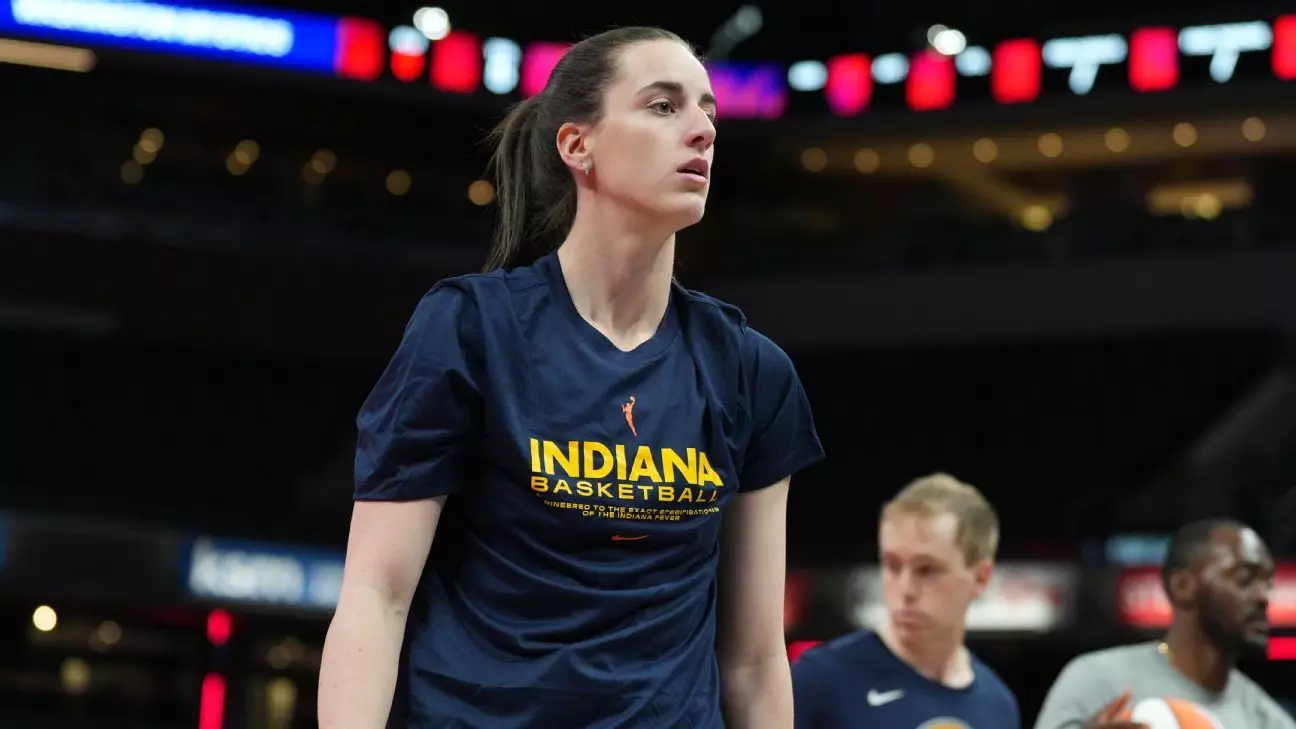The Indiana Fever are currently navigating a challenging season, one illuminated under the stark spotlight of star player Caitlin Clark’s unfortunate sidelining due to a left quad strain. Initially sustaining the injury during a high-stakes game against the New York Liberty, Clark has since stepped away from the court for three games, a rare occurrence for someone of her caliber—especially in her rookie season. This situation does not just reflect personal setbacks but reverberates through the entire team dynamic, showcasing the fragile nature of athletic careers where injuries can drastically alter the course of performance.
Caitlin Clark, the anticipated No. 1 draft pick who has taken the league by storm with her impressive skills, faces a pivotal moment. On the cusp of potentially returning for an important game against the Chicago Sky, she is steadfast in her decision to not rush her comeback. “It’s not worth it,” she stated, emphasizing the significance of both physical and mental recuperation. This situation embodies a critical lesson that transcends the realm of sports: patience. In a society obsessed with immediate gratification and rapid results, Clark’s mindful approach to recovery showcases commendable maturity and self-awareness.
Resilience Amidst Challenges
Indiana’s current record of 3-5 does provide glimmers of hope; however, the team is undeniably feeling the weight of Clark’s absence. Coach Stephanie White has expressed that while the team has shown resilience, the struggle to maintain cohesiveness on the court without their leading point guard cannot be understated. The adjustment period, particularly after losing a player who fundamentally orchestrates team play, has forced the Fever to navigate uncharted territory.
Clark’s experience is not just about overcoming an injury but also about stepping into a mentor role during her time on the sidelines. Observing games from the bench, she has taken this opportunity to develop a deeper understanding of strategies and team dynamics. “[It’s] the same as you turn on the TV and watch the NBA….That’s the best way to learn basketball, is just watch and absorb,” Clark articulated. This perspective enriches the narrative surrounding injuries; rather than viewing them solely as hindrances, they can also serve as transformative experiences that broaden an athlete’s understanding of their sport.
The Human Side of Athletes
In a league where performance is consistently measured, the emotional toll of being sidelined can be immense. Clark openly recognized this struggle during her time off. “I’ve never been a patient person my entire life,” she expressed, highlighting the internal battle athletes face when they find themselves out of their element. This dialogue fosters connection, as fans tend to view athletes as invincible warriors, not fully recognizing the human emotions that lie beneath their competitive exteriors. Clark’s acknowledgment of her struggle showcases an essential rawness that resonates with both athletes and fans alike, reminding us that vulnerability is not a weakness but an aspect of resilience.
While the Fever has faced adversity with several players experiencing injuries—like Sophie Cunningham—it’s become evident that the team’s spirit is far from broken. The recent win against the Washington Mystics serves as a testament to their resilience. In this shifting landscape, players are forging new identities, filling gaps, and learning to trust one another. Clark’s comments reveal an awareness that triumph and failure exist on a continuum where both challenge and growth are intrinsic.
Lessons in Leadership
Clark’s journey through injury is evolving into an important narrative in the WNBA, particularly because of how it infuses new energy into discussions about leadership. Her commitments as a teammate from the bench reflect a profound understanding of what it means to support others while amplifying collective effort. Stepping back to analyze plays and vocalize encouragement amidst adversity illustrates that true leadership encompasses adaptability and emotional intelligence.
As Clark prepares for her reevaluation and eventual return, one can only hope she carries these lessons back onto the court. The Fever is indeed confronting challenges, but Clark’s approach to her role signifies a shift that transcends mere athletic prowess. It beckons a forward-thinking perspective that positions athletes as holistic beings, integral to nurturing a cohesive team experience rather than simply being the stars of individual narratives. Embracing these qualities can only lead to a brighter future for the Fever—a future where strength is not just measured in points scored, but in the connections forged through adversity.


Leave a Reply